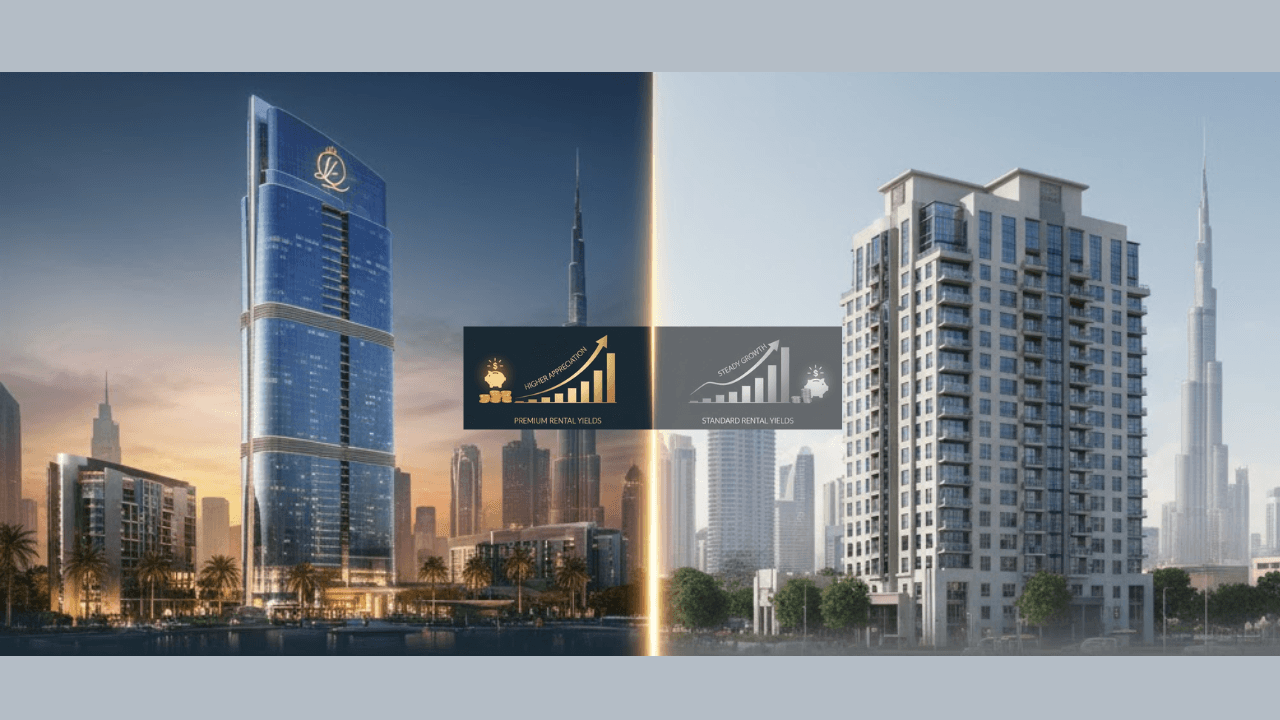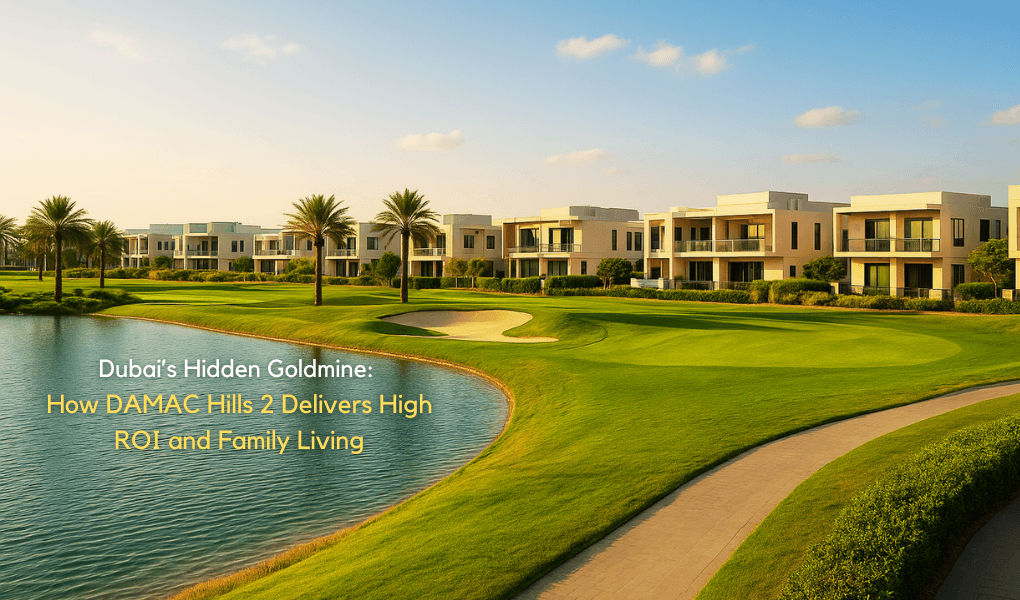
Branded vs Normal (Non-Branded) Properties in Dubai
Discover the ultimate guide to branded vs non-branded properties in Dubai. Compare ROI, rental yields, resale potential, and luxury investment opportunities.
This overview of the history of the Dubai real-estate market is highly relevant for a real-estate agent working with investors and first-time buyers. The content is broken down into phases, highlighting key milestones, risks, and implications for today's investment climate.
The emirate's real-estate activity began in a modest way: prior to large-scale development, Dubai was a small trading and pearling port. The establishment of the Dubai Land Department (DLD) in 1960 was a key institutional milestone for land and property management.
During the 1980s–1990s, the economy was still relatively oil- and trade-based; property was far less driven by global investor interest than later decades. Infrastructure investment and policy shifts started laying the groundwork: improved transport, port capacity, free zones, etc.
Take-away: The market was nascent, local, largely serving UAE nationals and domestic demand; the major boom was still ahead.
A pivotal turning point came when in 2002 freehold property laws were introduced allowing foreigners to buy property in designated "freehold" areas. With that, the market exploded: major large-scale developments like Palm Jumeirah, Dubai Marina, and later Burj Khalifa (and its surrounding district) became icons of investment-driven real estate.
Prices rose very sharply. One article noted property prices surged 300–400% during that boom phase. Dubai repositioned itself from oil/trade to a real-estate/tourism/investor destination.
Take-away: This was the "gold rush" era. For your investor guides and brochures (targeting first-time buyers or foreign investors) this era is key to show why Dubai became globally attractive.
The global financial crisis hit in 2008, and Dubai’s real-estate market suffered a hard correction. Oversupply, speculative buying, and easy credit all contributed to vulnerability. Some areas reportedly saw price falls of up to ~50% or more during the worst of the slump.
The correction exposed the risks of rapid development without matched demand, and highlighted the need for stronger regulation.
Take-away: For investors this period is a cautionary tale — highlighting the importance of supply/demand balance, regulatory backdrop, and liquidity risk.
From around 2010 onward, the market gradually recovered. Developers and the government introduced more regulation. However, from about 2016 through early 2019, the market faced downward pressure again: supply increased, global headwinds (oil prices, slower growth) weighed on Dubai property.
This era also introduced deeper institutional measures: more transparency, better mortgage regulation, more emphasis on end-users (not purely speculation).
Take-away: The market matured. As a real-estate agent, this era helps you frame realistic expectations for investors and first-time buyers — pointing out that Dubai is no longer only about 2006-style boom returns, but longer-term sustainability.
The market entered a strong surge post-2020. As of 2025, reports show robust price increases: for example, one data source shows residential price index rising ~15–18% year on year.
The Dubai Land Department reported strong transaction volumes: 84,196+ transactions in 2021 worth nearly AED 300 billion.
Key drivers include: global capital flows, Dubai’s positioning as a safe/investor-friendly location (tax-free, visa incentives), and limited supply in focal premium areas.
At the same time, caution remains: supply levels are still high in some zones; demand may be investor-driven more than end-user in some segments; cyclical risk remains given past history.
Take-away: For your investor-targeted guides, this is the "now" era. Emphasize the current opportunity but pair it with realism about risk (particularly for first-time buyers or less experienced investors).
Here are some take-aways you might integrate into your PDF guides and lead-generation materials:
• Ownership laws matter greatly: The introduction of freehold ownership to foreigners in 2002 transformed the market. For investors, knowing which areas are freehold, which are leasehold, etc., is essential.
• Supply vs. demand: One of the main causes of previous downturns was oversupply (especially off-plan) that outpaced actual occupancy/demand. For your investor clients, emphasise due diligence on supply pipelines, handover dates, project health.
• Macro linkages: The Dubai property market is sensitive to global economic events (oil prices, global credit, tourism flows), as well as local regulatory/leverage changes. Your investor clients should view it not as a standalone but part of global asset allocations.
• Location & segment matter: Premium zones (waterfront, iconic developments) have different risk/return profiles versus more mass-market areas. This helps you tailor your "first-time buyer" content (likely more value-driven, rental-yield-oriented) versus "investor" content (possibly more capital-appreciation-driven, premium zones).
• Regulatory & financing environment: Post-2009, financing, escrow, handover protections, project registration have all been strengthened. For first-time buyers these are vital. For investors, these help manage risk.
• Cyclicality & timing: The history shows boom-bust cycles. A smart investor (or a first-time buyer) should be aware of where the market sits in that cycle. For your guides, you could include a “where we stand now” section based on your 2025 perspective, noting that while prices are rising, risks remain.
• Yield vs. capital gain tradeoffs: For buyers (especially those renting property to support financing), yield and rental growth matter. For investors focusing on capital gains, historical appreciation and timing matter. Tailor your message accordingly.
Given that you are a Dubai-based real estate agent targeting investors and first-time buyers, you can leverage this history in several ways:
• Educational PDF Guide: Create a guide titled something like "A Smart Investor’s Guide to Dubai Real Estate: History, Cycles & What It Means for 2025+.” Use visuals (timeline, boom/bust cycle chart) and then tie into current opportunities and risk-mitigation.
• Segmented Flyers: For first-time buyers, include a shorter section: “Why Dubai now? (and what to watch for).” The history helps you show that Dubai isn’t just hype, but has evolved.
• Investor Pitch Deck: Use the “Boom period → Correction → Recovery → Current surge” narrative to propose a diversification strategy (e.g., include Dubai property as 10–20% of global real-estate portion, given its unique features).
• Risk Mitigation Checklist: From the history you can derive a checklist for buyers/investors: verify developer track-record, check project delivery status (especially off-plan), check handover dates, legal ownership regime, escrow account, liquidity/rental yield, macro indicators.
• Localization for your client base: Given your bilingual skills (Farsi-English), you can translate historical summary and tie in examples relevant to Iranian investors, first-time buyers from Persian-speaking diaspora, etc., making your marketing more culturally tailored.
• Highlight Current Data & Market Status: Use up-to-date indices (e.g., 2025 price gains) to show “where things stand now” and project outlooks. Example: price index up ~15% year-on-year.

Discover the ultimate guide to branded vs non-branded properties in Dubai. Compare ROI, rental yields, resale potential, and luxury investment opportunities.

DAMAC Hills 2 (formerly Akoya) is one of Dubai’s most affordable and fast-growing master communities, offering villas, townhouses, and apartments surrounded by lakes, parks, and family amenities. With average ROI up to 7% and long-term capital growth potential, it’s a top choice for both investors and first-time buyers seeking lifestyle and value in Dubai’s real estate market.

Dubai Silicon Oasis (DSO) is one of Dubai’s most attractive mixed-use communities, offering a blend of residential, commercial, and tech-focused developments. In 2025, DSO continues to draw investors with strong rental yields averaging 6%–9%, particularly for studio and 1-bedroom apartments, which deliver some of the highest ROI in the area.
Get in touch with our expert team and let us help you find the perfect property in Dubai. We're here to guide you through every step of your real estate journey.